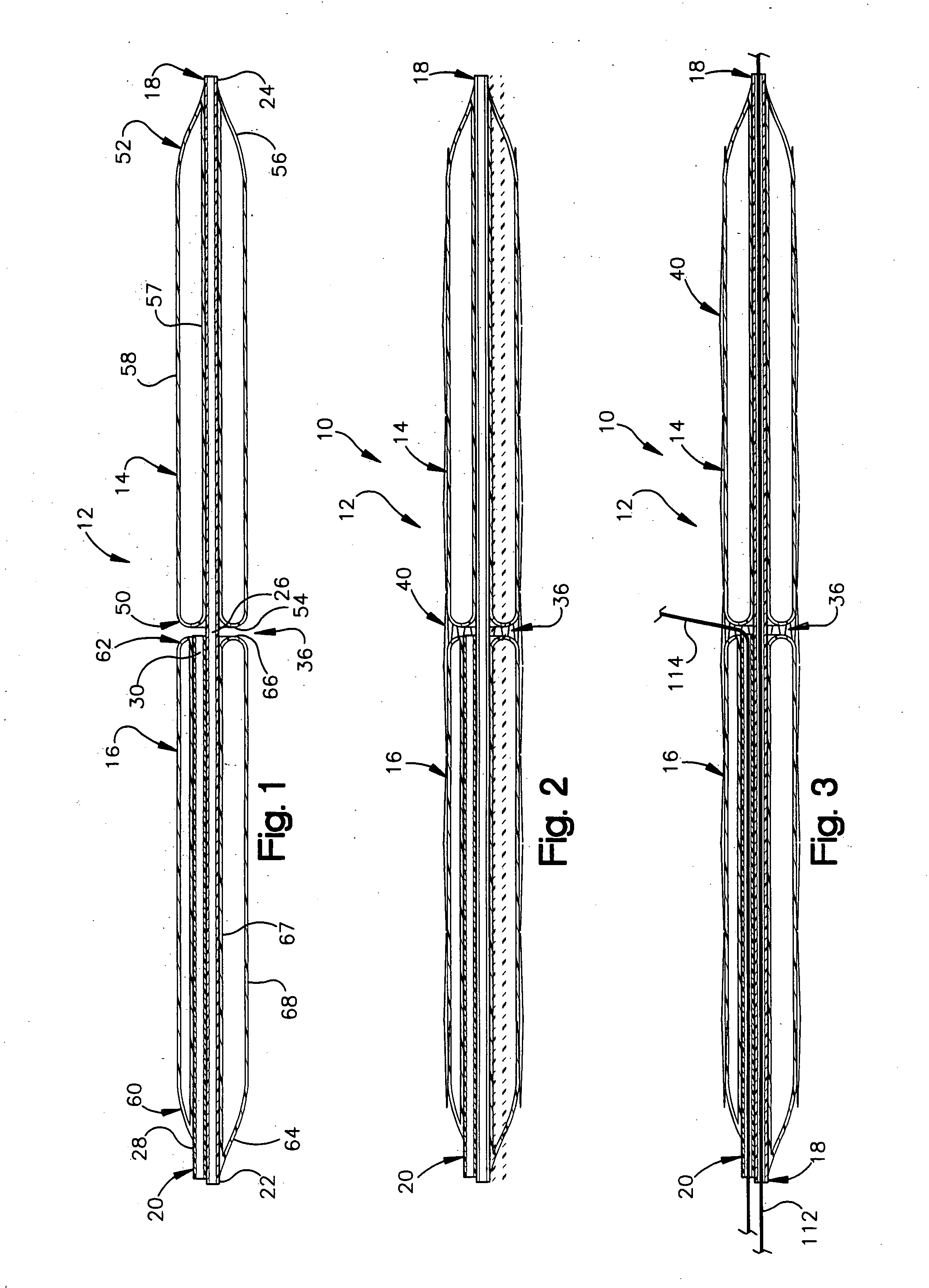Apparatus for treating atherosclerosis
a technology for atherosclerosis and apparatus, applied in the field of apparatus for treating atherosclerosis, can solve the problems of difficult and time-consuming procedures, difficult insertion of guidewires into branch vessels, and often difficult occlusion treatment, so as to prevent atherosclerosis and minimize the axial length of gaps
- Summary
- Abstract
- Description
- Claims
- Application Information
AI Technical Summary
Benefits of technology
Problems solved by technology
Method used
Image
Examples
Embodiment Construction
[0022] The present invention relates to an apparatus 10 (FIG. 2) for treating atherosclerosis, and is particularly directed to an apparatus 10 for interventional treatment of atherosclerosis at a vascular bifurcation formed by a junction of a branch vessel with a main vessel. As described more fully below, the apparatus 10 includes a balloon catheter 12 that is particularly useful in delivering and deploying a stent at or adjacent a bifurcation in a blood vessel. The apparatus 10 of the invention may be used with any conventional balloon catheter delivery system, including an over-the-wire balloon system or a rapid exchange balloon system. In addition, the apparatus 10 may be used to deploy any conventional balloon-deployable stent. Therefore, the scope of the present invention should not be limited to the exemplary delivery system and stents discussed below.
[0023]FIG. 1 illustrates the balloon catheter 12 of the apparatus 10. The balloon catheter 12 has first and second balloon po...
PUM
 Login to View More
Login to View More Abstract
Description
Claims
Application Information
 Login to View More
Login to View More - R&D Engineer
- R&D Manager
- IP Professional
- Industry Leading Data Capabilities
- Powerful AI technology
- Patent DNA Extraction
Browse by: Latest US Patents, China's latest patents, Technical Efficacy Thesaurus, Application Domain, Technology Topic, Popular Technical Reports.
© 2024 PatSnap. All rights reserved.Legal|Privacy policy|Modern Slavery Act Transparency Statement|Sitemap|About US| Contact US: help@patsnap.com










